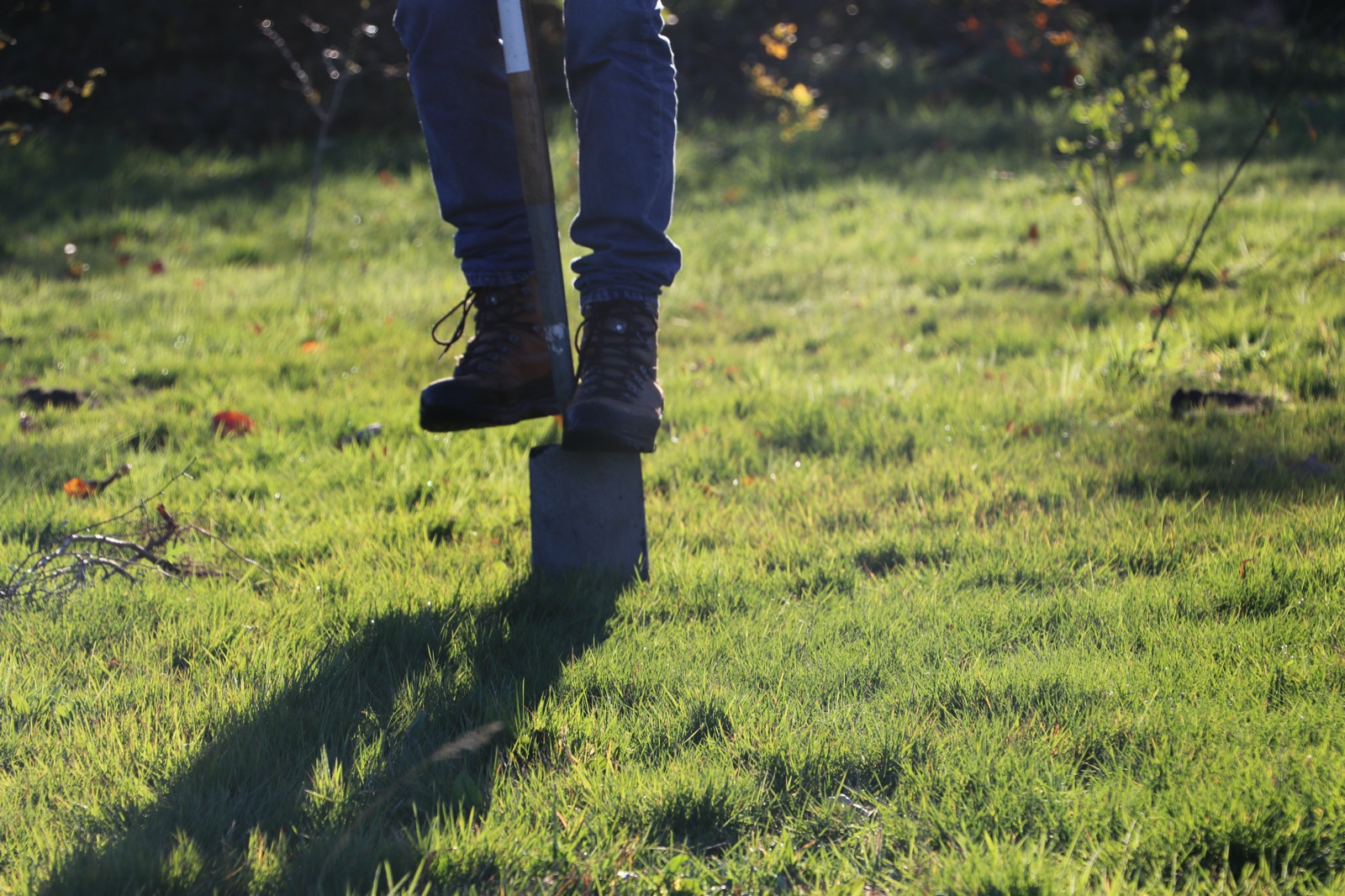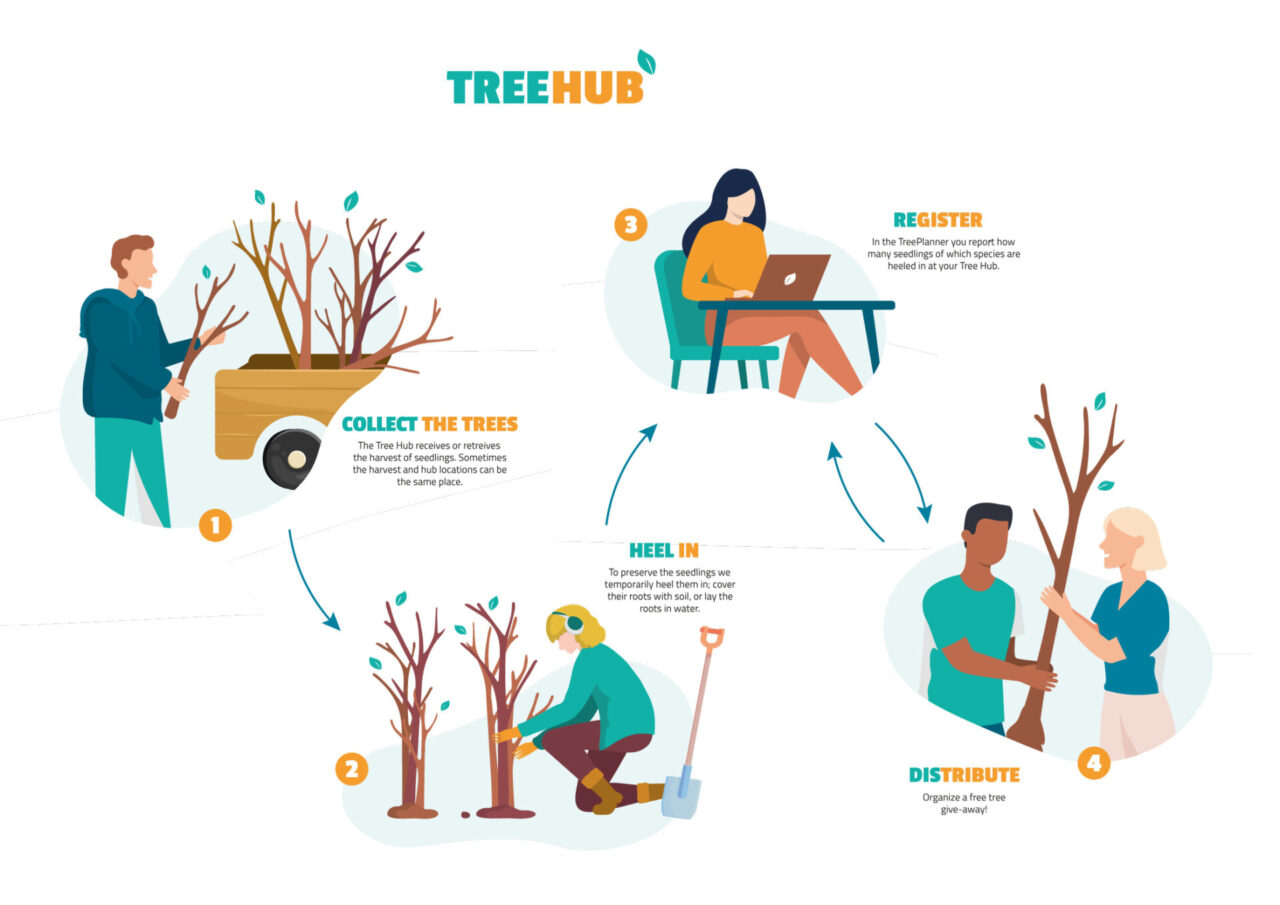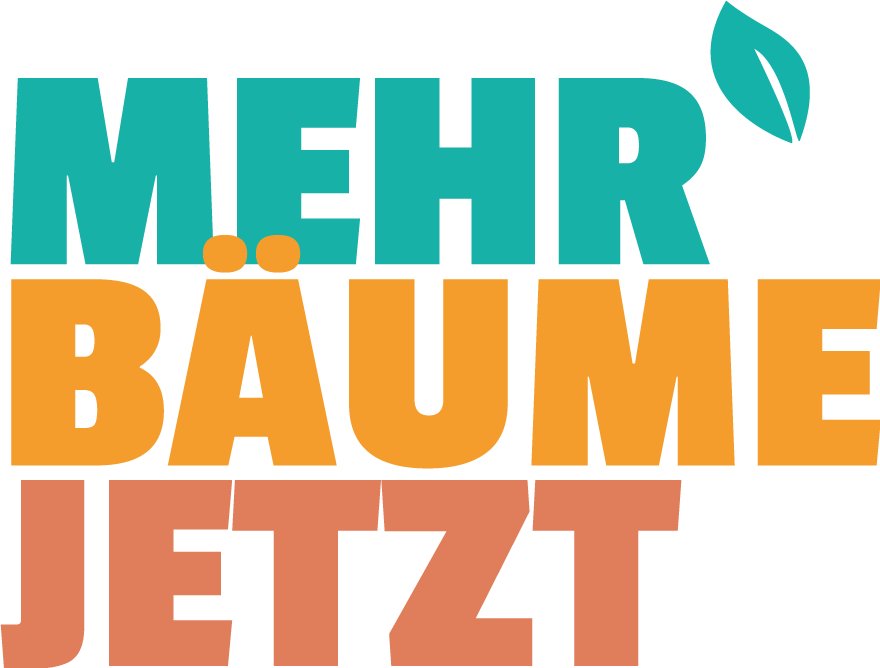Manual - TreeHub
How to organise a Tree Hub?
More Trees Now rescues excess or unwanted saplings, giving them a second chance at life. On harvest days, these saplings and shrubs are uprooted and bundled together. Sometimes, people who wish to plant them collect them directly. However, due to logistical challenges, this is often not feasible. In such cases, a Tree Hub collects the trees.
The season runs from November 1st to March 1st, with a possible extension to March 15th if all the trees have not been used up. During this period, the trees are dormant, so they can be safely used.
Tree Hubs represent the second step in the More Trees Now roadmap, playing a crucial role as the central locations where harvested seedlings in the region are temporarily stored and redistributed. It’s fantastic that you want to make a Tree Hub a reality!
The More Trees Now Method
Tree Hub Manual
Manual - Tree Hub
The basics - How to make a Tree Hub
In a Tree Hub, trees and shrubs from different harvest days are gathered. Here, they are temporarily stored until they are transported to the planting sites in a diverse mix of species. After all, a mix is best for biodiversity. Tree Hubs come in different shapes and sizes. They can range from sections of a farmer’s land and ravines on the edge of a nature reserve to busy exchange sites, community centres, and backyards.
What makes a place suitable?
1. What is feasible for me? What available land is in my network? What type of land do I personally own? You can start a small hub in your backyard, at the local vegetable gardening association, at a (befriended) farmer’s place, or with Environmental Education Centres. All you need is a few square metres for the first trench!
2. Where are the people I want to distribute to? Are you looking for large planting projects with estates, farmers, and food forests, or do you mainly want to distribute to people in urban areas? Choose a location that is easy for these people to reach.
3. Is the location easily accessible? This isn’t necessary, but it’s a nice bonus! Can a car with a trailer easily reach it? Could a truck get there? Creating flow on your site is desirable. You can achieve this by constructing a roundabout, for example, with a clear entrance and exit.
4. As a bonus, you can check whether there are other facilities at the site, such as a shelter, a toilet, or a water supply. These are nice additions, but not necessary to establish a Tree Hub!
How much space do you need?
In a mere 10 square metres, you can store hundreds of tree saplings. Expand this to 100 square metres, and you can house tens of thousands of trees. The trenches you dig should be slightly wider than a spade (approximately 25/30cm) and a spade and a half deep (35/40cm). This ensures that most root types will fit.
How Many People Should You Run a Tree Hub With?
The number depends on the size of the Tree Hub. A small hub located in a backyard can be managed by the volunteers themselves. However, if your Tree Hub is a bit bigger, a team of five volunteers would be ideal. Experience suggests that this ensures there are always a few people available. If you need additional volunteers, you can put out a call in the Tree Planner. Alternatively, you might consider collaborating with an existing volunteer group associated with, for example, a community garden.
What Gear Do You Need to Run a Tree Hub?
To manage a hub, you need the following materials:
- Spades
- Wheelbarrow
- Rope
- Labels
- Black waterproof markers
- Information material (in this guide)
- Possibly a trailer
- The Tree Planner tool (sign up!)
- Tree Hub sign (optional)
These items are largely the same as those required for harvest, so they are often shared with the harvest groups who deliver saplings to the Tree Hub. You could also enhance the appearance of the hub with a flag and/or a sign.
Register your Tree Hub
We will help you master all the skills necessary to run a Tree Hub. This will be a collective effort involving volunteers and the organisation. Connect with us, visit a Tree Hub, and let’s learn from each other’s experiences.
Once you have picked your location, dug the trenches, and your team, the party can begin!
In or Out of Town
You can select a hub in a town. These are typically smaller but closer to planters in urban areas. Consider options like the local petting zoo, allotment association, or even contact the local council! They may have temporary fallow land available. Alternatively, consult with the municipal green space manager for a parcel of land near a park.
You can also deliberately choose a hub outside the city – you will have more space and be able to distribute more easily to planting locations that require larger quantities. A farmer could be beneficial, either an agricultural or residential farm with a reasonable amount of land available. Estates may also be receptive to this project.

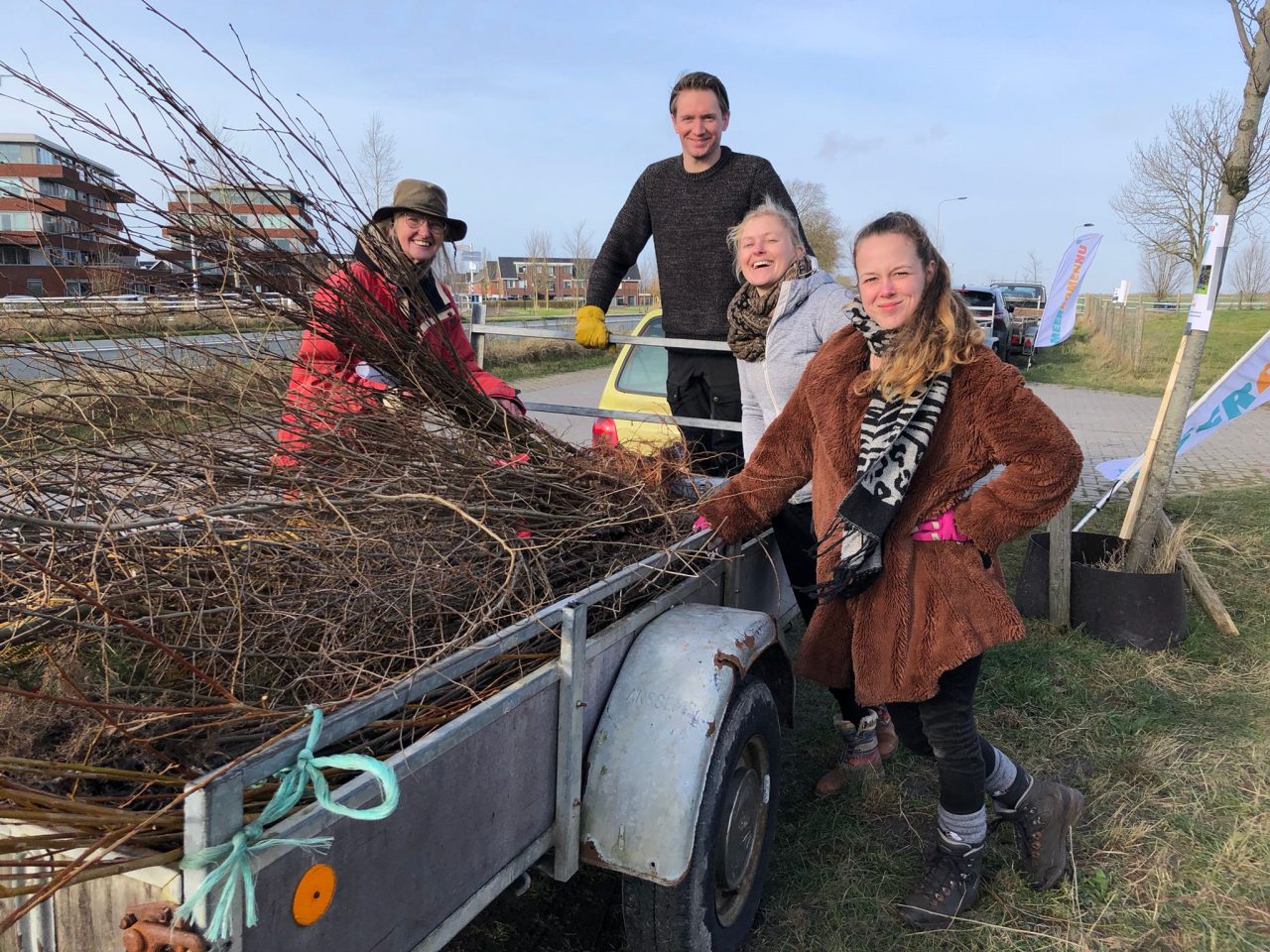
Tree hub in the tree planner
If you are designated as a Tree Hub in the Tree Planner, you serve as a storage and distribution POINT for tree saplings. As a Tree Hub, you can create one or more events for which volunteers and planting locations can register each time. Every Wednesday at 6:00 p.m., the Tree Planner automatically sends an overview of all events to the volunteers and planting sites in your area.
manual - treehub
Getting started: How do you run a Tree Hub?
Operating a Tree Hub involves four key activities: supplying seedlings, storing seedlings, tracking where seedlings go, and distributing them. Let’s go through each step.
Collecting the Saplings
The Tree Hub receives or collects the harvest. Sometimes, the hub itself is also the harvesting location.
Seedlings are gathered on harvest days at harvest sites. Harvest supervisors can get in touch if they need to dispose of their harvest.
It’s good to maintain lines of communication with harvest supervisors and local harvest groups. Regional coordinators can assist with this. Frequently, the core group running the Tree Hub overlaps with the core group organising harvest days in the area. This makes it easy to coordinate who collects the trees and where and when to bring them to the Tree Hub.
On a harvest day, trees and shrubs are usually sorted, bundled, and labelled on-site. Confirm this in advance with the harvest supervisor. There may be instances when this hasn’t been done. Are you willing to bundle and sort yourself if this is occasionally necessary? You can read more about bundling and sorting below.
Combining Hub with Harvesting or Not?
Would you also like to (help) with the harvest? Then search for a harvesting location near your Tree Hub. Sometimes these locations are the same: for instance, a Tree Hub on an estate where harvesting also occurs. Numerous Tree Hubs establish a regular volunteer group that simultaneously forms the harvesting group in that area. They learn from each other and share harvest days and hub tasks. Learn more in the Harvest Day Guide.
What Do the Seedlings Look Like?
Seedlings are young trees and shrubs that are surplus or unwanted in their current location. For example, they might be too close to a footpath. Seedlings stand between 50 and 150 centimetres tall. With the help of volunteers, we dig them out. Afterwards, they are promptly collected or transported to a Tree Hub. And that Tree Hub is you!
Tips for the Safe Transportation of Trees
A small number of seedlings might fit in the pannier, cargo bike or boot of a car. But often, to keep your car clean, these are transported in a trailer. The bundles of trees are stacked like roof tiles, and occasionally, you rotate the direction of the trunk. You start with the roots towards the car side, and if that pile becomes very disproportionate, you stack with the roots towards the opposite side. In this way, most bundles will fit in the trailer.
The most important thing in transporting the seedlings is to protect the roots. The more hair roots (fine roots, as thin as hairs! They often look white), the better the tree will do. Rubbing or chafing on the roots can cause the (hair) roots to be damaged. Gentle nudging can be done, but be very careful. When in doubt, don’t do it!
Protect the roots from sun and wind to prevent them from drying out. This can be done with a tarpaulin, cloth, leaves or with old towels and jute bags that can also be dampened if necessary.
Heeling in the Saplings
To ensure the saplings remain healthy, you can temporarily put them in water or heel them in. Then, cover the hair roots with soil..

Sorting
Sorting trees requires species knowledge. We cover this in detail on our course days for Tree Hubs and harvest supervisors. We have also developed a winter bud chart.
Healthy Trees
Keep an eye out for significant discolouration of the bark or barren tops and leaves. These could be indications that the seedling’s health is deteriorating. If that’s the case, don’t propagate it. Learn more about tree diseases.
When the trees arrive at the tree hub, it’s beneficial to have a group of at least three people prepared to assist the driver with heeling in the trees. If you receive trees that haven’t been sorted, bundled, and labelled yet, we recommend having a group of five or more volunteers ready.
- Dig a trench
- Make bunches of seedlings
- Place the seedling bunches as close together as possible in the trench. This will allow more seedlings to be stored and protect the roots
- Scatter loose soil over the roots until all hair roots are covered to prevent the roots from drying out
- Place a label with the seedling’s name next to the ensiled seedlings
Plants and shrubs can remain heeled in for months. They need to be given away before the end of winter!
“Heeling in” the Cuttings
The most convenient method is to place cuttings and slugs in the water with their bottoms. This way, you don’t have to dig in slugs and cuttings. The slithers of willows and poplars are (at least) 2 metres long. It can sometimes be challenging to keep them upright. Pits or trenches have to be dug very deep. This can be labour-intensive. Cuttings (about 50cm) often fare better.
By putting the cuttings and slugs in the water with their undersides, they can start to produce roots! These can remain in the water throughout the winter without moulding. However, during freezing weather, it’s not advisable to have cuttings in the water as it can freeze. In such cases, the best option is to plant them.
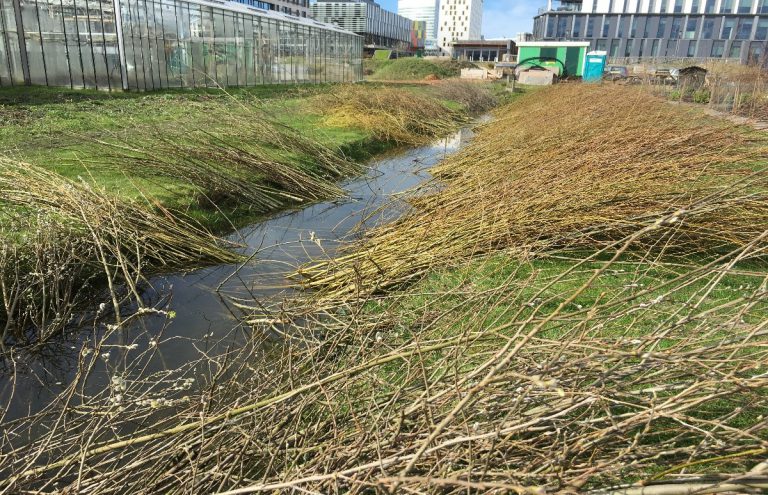
Finding Volunteers Through the Tree Planner
If you need additional volunteers, you can create an event in the Tree Planner labelled ‘General Tasks’. Any volunteer registered in the Tree Planner can respond to this event and sign up for tasks such as trench digging, grading, bundling, and ensiling. Events created are circulated every Wednesday at 6 pm within a 25-kilometre radius of your location. Create the event on time with an engaging description!
Events Also Accessible to Helpers Outside the Tree Planner
You can also share an event outside the Tree Planner, for instance, on LinkedIn, Facebook, Instagram, X/Twitter, WhatsApp, or via email. This allows individuals who aren’t part of the Tree Planner to also participate in an event.
Keeping Track of Your Stock of Trees
In the Tree Planner, you can accurately track how many of each type of tree has been harvested.
What Varieties of Trees Do You Have in Your Tree Hub?
As soon as you receive trees and shrubs for pitting, register them in the Tree Planner. That way, you maintain an overview of the stock and planting locations, and also see what is available.
Both the origin and destination locations can enter a group of trees. The harvest supervisor, who is often the manager of the harvest location in the Tree Planner, can also record the harvest with your hub as the destination. You will then see this in your transaction overview. You can then correct any errors. This can be done on your computer in your dashboard, or on-site using the More Trees Now app, in conjunction with the harvest supervisor when delivering and heeling in the trees.
Tips and Tricks
Maintain a record of what comes in and goes out at each harvest and giveaway event. This will keep your stock as up-to-date as possible! Updating it afterwards can be a lot more work and hassle.
Further information about registration can be found at point 4, ‘Handing Out Trees’.
Sorting
Sorting trees requires species knowledge, a topic we cover in detail on course days for hubs and harvest supervisors. Check your region’s calendar for all course days. We have also developed a handy button map.
Getting to know tree species is also beneficial for advising planting locations. Interested in learning more about the trees in your hub? Then explore our “Tree Finder”. This filter tool allows you to discover the soil types and functions of various trees.
Indigenous or Exotic?
More Trees Now adheres to the principle: we hand out at least 90% native species. If you have a non-native tree, it may only be distributed to a food forest or backyard where it can serve an ecological role. After all, many non-native trees already exist there and so they can do little harm. Note: if it is a non-native and invasive tree, convert it into a dead hedge. A branch belt is a hedge of branches laid sideways; dead, the roots are not in the ground. In this, small animals can make a home and take refuge. Some invasive species are so tenacious that it’s best to shred their seedlings so they don’t creep from the dead hedge to the soil to root anyway. Think American Bird Cherry or Japanese Knotweed.
Organise a Tree Giveaway
Arrange a tree giveaway day and turn it into a green celebration!
Planting advice
Looking to provide advice to planting sites about the trees you will be distributing? Then, explore the Treefinder: for each tree, you can discover the soil types and functions it is best for.
Native / Non-Native
Make sure that if you distribute non-native tree saplings, they are given to a safe location, such as in back gardens or a food forest. Native trees are best for biodiversity. Learn more about native trees in the UK here and non-native trees in the UK here. Learn more about native trees in Ireland here and non-native trees in Ireland here.
Organise a Giveaway Day
When you create an event in the Tree Planner at your Tree Hub location, you can select ‘Distribution Day’ under ‘type of event’. Both volunteers and individuals who wish to collect trees, whether they’re within or outside the Tree Planner, can register for this. Generally, volunteers and those who want to collect trees choose a time slot. Time slots are automatically created in half-hour increments from your start to end time, which you set yourself. You also decide the maximum number of people you want per time slot.
Prepare Your Tree Hub for a Smooth Distribution Day
Distribution days are often a big event. To ensure they run as smoothly as possible, we have some helpful tips!
- Design a proper site layout. Where is the entrance? Where is the exit? Clearly mark these areas with flags, cones, or pavement chalk. Consider creating a roundabout to prevent traffic congestion on the site.
- Prepare the seedlings in advance. Organise the seedlings into different compartments. At these compartments, display a sign with the name of the seedling and, if necessary, a brief description. Keep the roots of the seedlings covered with damp cloths.
- Set up a few ‘tree posts’: At these tree posts, people who come to collect trees can have a QR code scanned. Two volunteers per post should be sufficient. One volunteer scans the code while the other volunteer retrieves the desired seedlings.
- Make volunteers stand out! You can achieve this by having everyone working in the Tree Hub wear a More Trees Now vest or by having everyone dress in the same colour.
What Does a Distribution Day Look Like?
09.00-09.10 |
Volunteers arrive. Discuss the schedule together and divide everyone into groups. Set up the proper layout of the site. |
|---|---|
09.45-10.00 |
The volunteer groups each take up a post. One could receive the people requesting trees, scan their QR code and register the trees they want. The other person can retrieve the trees and hand them over. The third group could heel out the trees. |
10.00-12.00 |
Let's start giving away some trees! When you create a giveaway event in the Tree Planner, you automatically have 30-minute time slots people can sign up to. You choose the maximum number of people that can come per time slot. When people sign up they put in a request for a specific number of trees. When people request a large amount, you can pre-arrange a package for them. This way, you don't have to allocate more time for large locations than for small ones. |
12.00-12.30 |
Schedule a break by blocking out some time slots in advance. Change up the tasks and have lunch or some tea, depending on how long your event is and what the volunteers prefer. |
12.30-14.00 |
Next round of time slots. You can decide how long your event lasts; this could also be the end. |
14.00-14.30 |
Time to bring the day to an end. Heel in the saplings that have not been picked up, tidy up the site, and thank your volunteers. You can choose to call the people who signed up but didn't show up. Maybe they are late, but you can leave some trees for them at an agreed-upon place. You may also choose to count what you have left to double-check the registration. Remember to thank your volunteers! |
manual - treehub
Spread the Word About Your Giveaway!
To ensure as many trees as possible find a new home, generate excitement and invite people to your giveaway event! You can do this through social media, group apps, and the Tree Planner. Local media can also play a key role in making your event a success.
Tree Planner
Everything starts with the Tree Planner. Create your event in the Tree Planner, and all participants within a 25km radius of your location will be automatically notified on Wednesday evening at 18:00.
Social Media and Groups-Apps
For each event you create, a public link is generated. This is a sign-up link for people inside and outside the Tree Planner system. They can sign up for a specific time slot to either pick up trees or to help out. You can share this link via your social media channels and group apps. To make things easier, we have created several designs that you can easily customise and use for your own promotion.
Consider setting up a dedicated social media account for your Tree Hub. By allowing volunteers to follow your journey, you create more engagement. Some Tree Hubs have emerged and grown this way: they serve not only as plant shelters but also as community gardens, becoming a green space where the local community gathers.
Flyers, Signs, Flags
Create a fun flyer or request your own Tree Hub sign using the Canva designs provided in the link. This will help to make your hub visually appealing!
Photo & Video
Don’t forget to take compelling photos of your harvest, your Harvest day, and your distribution day! There are plenty of fun videos you can make. If they are intended for social media, make sure they are no longer than 1 minute. Have you captured something playful and wish to share it? There are plenty of excellent online programmes that you can use to put together a fun video. We’re also here to help you get started. Send your material to [email protected]!
Local Media
We have created a standard press release template that you can personalise with your specific time, date, and details. This can be sent to local newspapers, radio stations, and television channels. Often, local media outlets maintain a calendar where they can feature your harvest and distribution day. You can find these resources in our communication toolkit!
